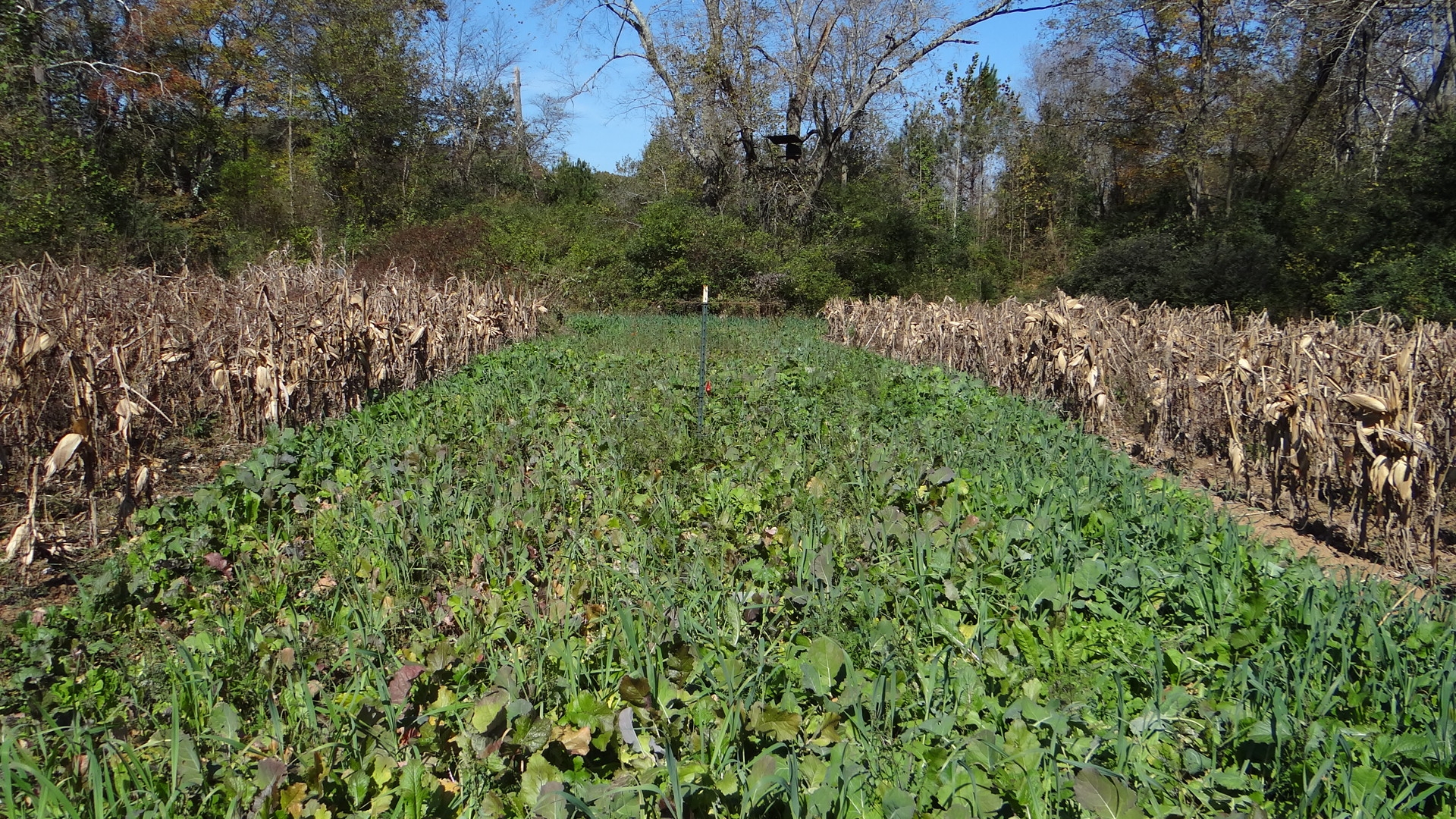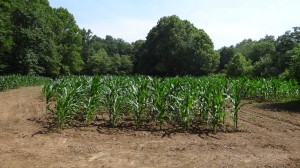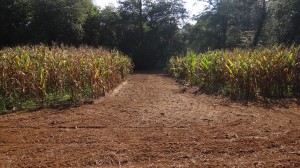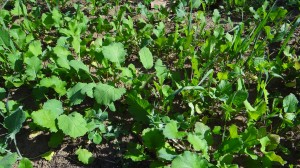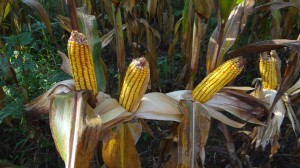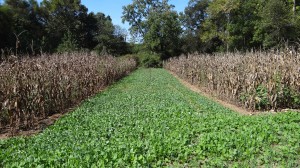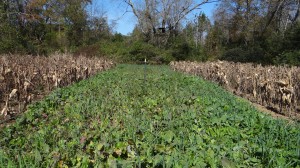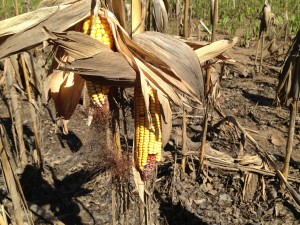Southern state food plots work differently than northern state food plots. When we say southern states, we mean south of the Mason Dixon Line, including but not limited to North and South Carolina, Georgia, Alabama, Mississippi and Louisiana. One of the main differences in southern food plots is how forage crops are grown and established as annuals and not as perennials. In the northern states clover, alfalfa, chicory and a few other species can be established as perennial multi-year crops. The main reason southern perennials are hard to establish is an extended period of hot weather throughout the summer and many times accompanied by periods of drought. One of the staples of southern food plots is grain corn which is grown and left standing for the deer to feed on throughout the fall, winter, and sometimes into early spring. One of the most common summer annual deer food plot crops are soybeans. Deer like soybeans so much that many times they need to be replanted because the deer have eaten them down to the ground. That is what happened in these food plots.
In this field the food plots have been set up in alternating 12 rows of corn and 12 rows of soybeans. This makes a nice combination of cover for the deer and the availability of both grain and annual forb foliage. We use the term forb as a word to describe a variety of wild and cultivated flowering and foliage plants that the deer browse on throughout the year. In the Fall, Cool Season Brassicas, Clover, Chicory, Triticale, Turnips & Peas are planted to replace the soybeans. The soil is prepared and the seed is planted sometime between Sept. and November depending on how far south.
In the cool moist weather of a normal Fall, the seeds will germinate nicely and then establish themselves into an attractive food plot. The variety of species will be tempting to the deer throughout the Fall, Winter, Spring, and early Summer. The triticale, clover, chicory and peas will be immediately available and the brassicas and turnips will be preferred after a frost or two when they become sweeter.
By this time the grain corn has dried and will be preserved throughout the winter as long as it stays on the stalk and off the ground. The deer will get in a habit of feeding on this grain corn. If there are any squirrels around, they will help pull it off the stalk.
The combination of the grain corn and forbs, in alternating cover and open areas, surrounded by trees and brush, and nearby water, make this an almost irresistible place to feed and bed down. Trail cams record the plot visitations and help determine what deer are frequenting the plot, when and how often.
As the plot further matures into archery, crossbow, gun, and muzzleloader seasons, the plot is ready for the hunt. In this case a camouflaged stand has been erected in the tree at the back edge of the plot and will provide countless hours of enjoyment, quiet wildlife observation, and an opportunity for a successful hunt.
After the hunting season is complete, the plots will continue to be available to pregnant does, maturing young bucks and last years fawns. The food plots contribute to the overall health of the local deer herd by providing a year around source of high quality forage for the deer.

